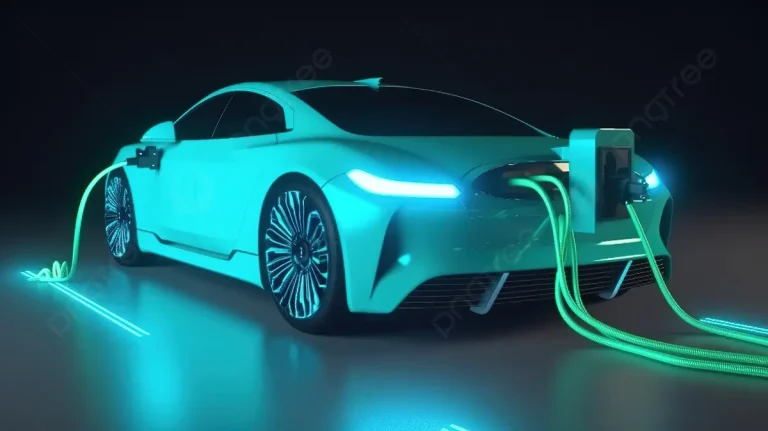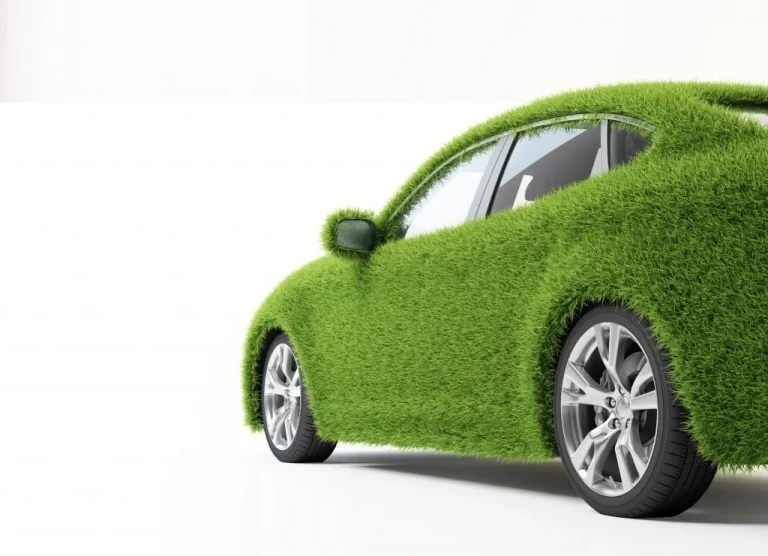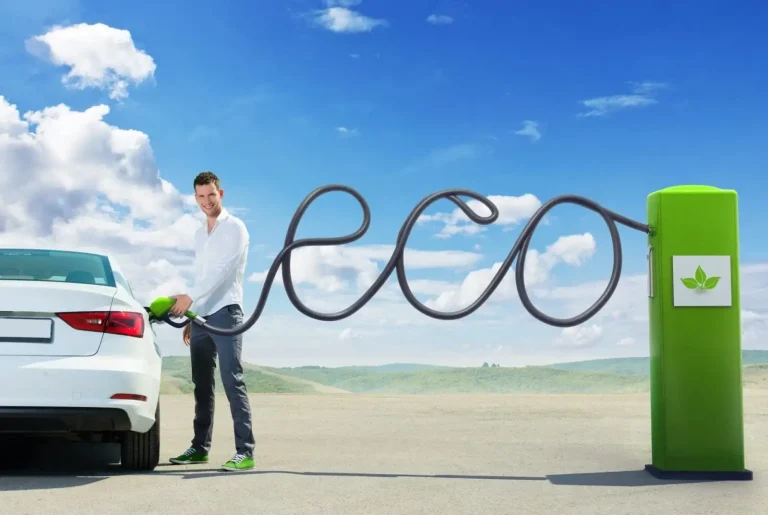How to Make Your Car More Eco-Friendly
Improving your car’s eco-friendliness doesn’t require professional help. You can take simple steps to make a difference. Start by performing routine checks on your car’s fluids, tire pressure, and overall cleanliness.
Regular maintenance, which includes changing oil and filters, can be done at home or at a service center, ensuring your car runs smoothly and uses fuel efficiently. Here is a comprehensive guide covering all the ways to make your car more eco-friendly.
Regular Maintenance is Key
Keeping your car well-maintained helps it run efficiently and reduces harmful emissions. Here’s how to maintain your car properly:
- Change the oil regularly: Using high-quality synthetic oil makes your engine run smoother and more efficiently. Synthetic oil lasts longer and helps reduce engine wear, which means fewer oil changes over time and less waste.
- Replace air and fuel filters: Clogged filters make your engine work harder, which increases fuel consumption and emissions. Replacing these filters as recommended by your car’s manufacturer will help maintain optimal engine performance.
- Check and replace spark plugs: Worn-out spark plugs can cause your engine to misfire, leading to poor fuel efficiency. Replacing them as needed helps your car run cleaner and more smoothly.
- Monitor your car’s emissions: Regular emissions tests can help identify problems early and ensure that your car meets environmental standards.
Routine maintenance ensures your car uses less fuel, produces fewer emissions, and stays in good shape for longer.
Keep Your Tires Properly Inflated
Proper tire pressure improves fuel efficiency and extends the life of your tires. Driving with underinflated tires increases rolling resistance, causing your car to use more fuel. Here’s how to keep your tires in top condition:
- Check tire pressure monthly: Use a reliable tire pressure gauge to check your tires at least once a month and before long trips.
- Adjust tire pressure for weather: Tire pressure can fluctuate with temperature changes, so make sure to check your tires more frequently during extreme weather.
- Follow the manufacturer’s recommendations: The correct tire pressure for your car can usually be found on a sticker inside the driver’s door or in the owner’s manual.
Proper tire maintenance can improve your car’s fuel economy by up to 3%, which translates to savings at the pump and fewer emissions.
Drive Smarter
Your driving habits have a significant impact on fuel consumption and emissions. Follow these tips to drive more eco-friendly:
- Avoid rapid acceleration and harsh braking: Sudden starts and stops can reduce fuel efficiency by up to 30% on highways and 40% in city traffic. Accelerate gradually and anticipate traffic to slow down gently.
- Maintain a steady speed: Use cruise control when driving on the highway to keep a consistent speed. This helps save fuel and reduces the strain on your engine.
- Plan your trips: Combine errands into one trip to reduce the number of short journeys you make. Short trips use more fuel because your car’s engine doesn’t reach optimal temperature.
- Avoid unnecessary idling: Idling wastes fuel and produces harmful emissions. If you’re waiting for more than a minute, it’s better to turn off your engine and restart it when you’re ready to move.
Lighten Your Load
A heavier car requires more energy to move, which increases fuel consumption. Here are some simple ways to lighten your load:
- Remove unnecessary items: Don’t use your car as a storage unit. Take out heavy items like sports equipment, tools, or luggage when they’re not needed.
- Use a roof rack only when necessary: Roof racks and carriers can add extra weight and create wind resistance, which decreases fuel efficiency. Remove them when they’re not in use.
By keeping your car as light as possible, you can improve your gas mileage and reduce emissions.
Use Eco-Friendly Products
The products you use to clean and maintain your car can have an impact on the environment. Here’s how to choose more eco-friendly options:
- Car cleaning products: Many traditional car care products contain harsh chemicals that can be harmful to the environment. Opt for biodegradable and non-toxic cleaning solutions that are safe for both your car and the planet.
- Waterless car wash: A waterless car wash spray can help you clean your car without wasting water. This method typically uses only a few ounces of water compared to the 80-140 gallons used in traditional car washes.
- Eco-friendly wax and polish: Choose waxes and polishes that are free of harmful chemicals and solvents. Plant-based or natural waxes are a good choice.
By using eco-friendly products, you can reduce water pollution and keep your car looking great while protecting the environment.
Opt for Fuel-Efficient Tires
Not all tires are created equal when it comes to fuel efficiency. Tires with lower rolling resistance make it easier for your car to move, which improves gas mileage. Here’s what you should know:
- Look for low rolling resistance tires: These tires are designed to reduce the energy required to keep your car moving. They can improve fuel efficiency by up to 10%.
- Choose quality tires: While low-cost tires may be tempting, they often wear out faster and may not be as efficient. Investing in high-quality, fuel-efficient tires can save you money in the long run and reduce the frequency of replacements.
- Keep your tires aligned and balanced: Regular tire alignment and balancing help your car run smoothly and prevent uneven tire wear, which can affect fuel consumption.
Reduce Air Conditioner Use
Running the air conditioner puts extra strain on your car’s engine, leading to higher fuel consumption. Here’s how to minimize A/C use without sacrificing comfort:
- Use the A/C sparingly: Try using the air conditioner only when absolutely necessary. On cooler days, open the windows or use the fan setting to circulate air.
- Pre-cool your car: Park in the shade or use a sunshade to keep your car cooler when parked. This can reduce the need for blasting the A/C when you start driving.
- Set a moderate temperature: If you need to use the air conditioner, set it to a moderate temperature instead of maxing it out.
By being mindful of your A/C use, you can reduce fuel consumption and help your car run more efficiently.
Switch to Synthetic Oil
Switching to synthetic oil can help your engine run more smoothly and efficiently. Here’s why:
- Lasts longer: Synthetic oil breaks down more slowly than conventional oil, meaning you can go longer between oil changes.
- Better for extreme temperatures: Synthetic oil performs well in both very hot and very cold conditions, which helps your engine run more efficiently in all seasons.
- Reduces emissions: Because synthetic oil helps your engine run cleaner, it can reduce harmful emissions and improve overall fuel efficiency.
Switching to synthetic oil can save you money on oil changes and make your car more eco-friendly.
Refuel Wisely
The way you fill up your gas tank can also impact your car’s environmental footprint. Here’s how to refuel in an eco-friendly way:
- Don’t top off the tank: When the gas pump automatically stops, don’t try to add more fuel. Overfilling can cause harmful vapors to escape and increase pollution.
- Secure your gas cap: Make sure the gas cap is tightened properly to prevent fuel from evaporating. Loose or damaged caps can allow gas to escape, wasting fuel and polluting the air.
Consider Alternative Fuels and Carbon Offsetting
If switching to an electric or hybrid car isn’t possible for you, consider these alternatives:
- Use biodiesel: Biodiesel is a renewable fuel from natural oils and fats. It can often be used in diesel engines with little or no modification and reduces emissions compared to traditional diesel.
- Offset your carbon footprint: Even the most eco-friendly cars produce some emissions. To counteract this, invest in carbon offset programs that support renewable energy projects or tree-planting initiatives. These programs help balance out the environmental impact of your driving.
Carpool or Use Public Transportation
Reducing the number of cars on the road can significantly cut down on emissions. Here’s how you can contribute:
- Carpool with friends or coworkers: Sharing rides helps lower the number of vehicles on the road, reducing traffic and emissions.
- Use public transportation: When possible, opt for public transit instead of driving. It’s a more sustainable way to get around and can save you money on gas and maintenance.
Drive Less When You Can
One of the best ways to make your car more eco-friendly is to use it less. Here are some ideas:
- Walk or bike for short trips: For errands that are close to home, consider walking or biking instead of driving. It’s good for the environment and your health.
- Work from home: If your job allows, working from home
Describe Two Benefits of Eco Driving
Eco driving comes with numerous benefits. Here are two key advantages:
- Saves Money: Driving in a more efficient way helps you use less fuel, which can save you a significant amount of money over time.
- Reduces Emissions: By practicing eco-friendly driving habits, you lower your carbon footprint and contribute to a cleaner environment.
Benefits of Eco-Friendly Driving
- Better Fuel Efficiency: Eco-friendly driving techniques help you get more miles per gallon, reducing the number of times you need to fill up.
- Lower Maintenance Costs: Driving smoothly puts less strain on your car’s engine and other components, leading to fewer repairs.
- Healthier Environment: Reduced emissions mean cleaner air and a healthier planet.
Conclusion
Reducing your car’s environmental impact is more important than ever. By making some simple changes, you can drive more sustainably, save money, and help the planet.





